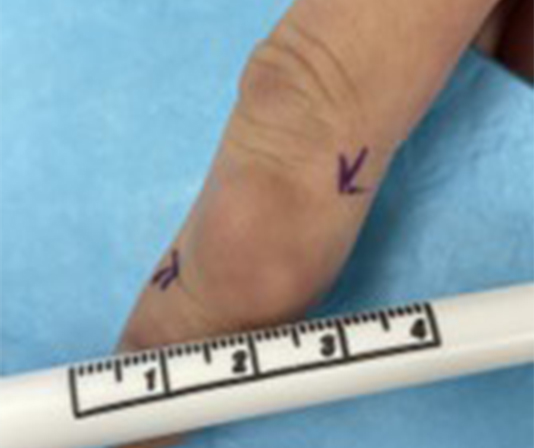Giant Cell Tumour
What is it?
A giant cell tumor is noncancerous, however it is locally aggressive and may damage its surrounding structures. They have a rare occurrence.

Giant Cell Tumour
What are the symptoms?
Giant cell tumors most often appear in the knees, or near the joints of the arms and legs. Most are small (2 to 4 centimetres) in size, however they can be larger depending on its location. These tumors usually cause pain in the joint and may also limit joint movement. The pain usually worsens with increased use of the affected joint and may also worsen over time as the tumor progresses.
What is the cause?
The cause of giant cell tumor formation is unknown. These tumors most often occur in people between the ages of 20 and 40 years old.
How is it treated?
Giant cell tumors almost always require surgical excision to prevent it from damaging nearby bone, tendon, and joint. However, it should be noted that the tumor may reappear even after surgical treatment, especially if it has eroded into tendon, bone, and joint.
Before surgery preparations
- This is a day surgery, meaning that you are not admitted to stay overnight.
- Fasting is not required for this surgery and please let your surgeon know if you are taking blood thinners. Some patients who are on blood thinners may need to pause their medications.
During surgery
- First, your incision site will be numbed using local anesthesia. You should not feel any pain after the anesthesia, however, you may feel some pushing and pulling during your procedure, just like you do at the dentist.
- Right before the surgery begins, a tight cuff will be placed on your upper arm to constrict blood flow. The cuff will be inflated for approximately 20-30 minutes and may cause some discomfort.
- An incision will be made to excise the tumor. The removed specimen will be sent to pathology to confirm the diagnosis.
- Once the excision is complete, the incision will be sutured and wrapped with dressings.
After surgery management
What to expect
- If you experience pain, you may take over-the-counter Tylenol Extra Strength (Acetaminophen) or Advil (Ibuprofen) for pain relief. If you need stronger medication, your surgeon can prescribe that to you. If you are experiencing severe pain, please contact your physician or go to the emergency room.
How to manage your wound
- For at least 2 days after the surgery, keep the dressing clean, dry, and intact.
- After 48 hours, you may remove the dressings and shower like normal.
- After removal, wash the wound(s) with soap and water at least 3 times a day, and expose it to air to allow it to dry. You can apply a thin layer of Polysporin to the incision site.
- You should have a follow-up appointment booked 10 to 14 days after the procedure for your doctor to assess the wound and remove the sutures.
- Please note that a bit of swelling over the incision is normal. However, watch out for signs of infection such as redness that spreads beyond your incision(s), skin breaking open, and/or pus draining from the incision(s).
- If you experience any of these signs of infection, please call your surgeon to book an appointment as soon as possible or go to the emergency room.
Exercises for recovery
- Use of your hand immediately after surgery is encouraged to prevent scarring.
- However, avoid heavy lifting or strenuous activity until the sutures are removed at your follow-up appointment.
- Feeling hardness over the incision site after surgery is normal as it is a result of scar tissue development. After your stitches are removed, you should massage the area 3-4 times a day to help heal the skin and help with the sensitivity that develops with non-use. Over time, the hardness should go away.
- If the giant cell tumor was located in your hand, please click on the link below to watch a video demonstration from Dr. Hong’s YouTube channel on exercises you should do after your surgery.